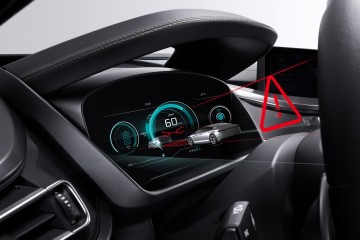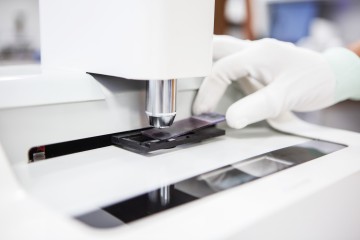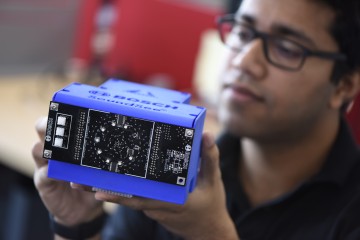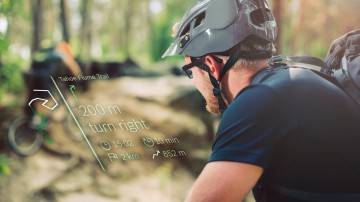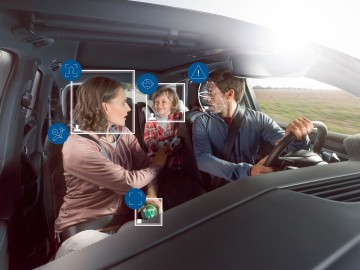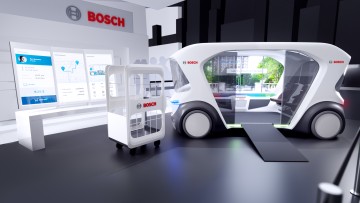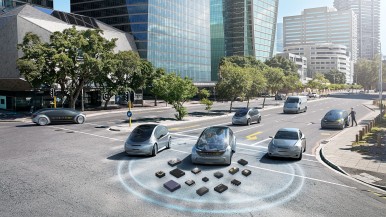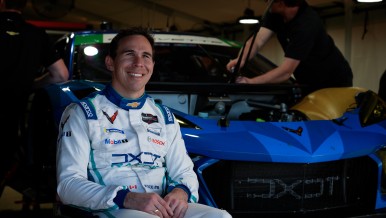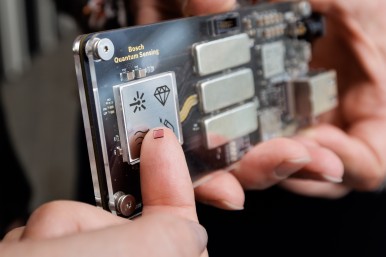Stuttgart, Germany / Las Vegas, NV, USA – At CES® 2020 in Las Vegas, Central Hall, booth #12401 from January 7 to 10, 2020, Bosch is presenting connected products for mobility and the home. Among the highlights at the trade fair are solutions that either make use of artificial intelligence (AI) or that were developed or manufactured with its help. The international supplier of technology and services wants to make AI safe, robust, and explainable, whether in manufacturing, smart homes, or automated driving.
Contact persons for press inquiries:
Melita Delic, +49 711 811-48617, +49 160 7020086,
Trix Böhne, +49 30 32788-561, +49 173 5239774,
Irina Ananyeva, +49 711 811-47990, +49 152 59753284,
Annett Fischer, +49 711 811-6286, +49 152 08651292,
Christiane Wild-Raidt, +49 711 811-6283, +49 152 22978802
Mobility is the largest Bosch Group business sector. According to preliminary figures, it generated sales of 55.9 billion euros in 2024, and thus contributed around 62 percent of total sales. This makes the Bosch Group one of the leading mobility suppliers. Bosch Mobility pursues a vision of mobility that is safe, sustainable, and exciting. For its customers, the outcome is integrated mobility solutions. The business sector’s main areas of activity are electrification, software and services, semiconductors and sensors, vehicle computers, advanced driver assistance systems, systems for vehicle dynamics control, repair-shop concepts, as well as technology and services for the automotive aftermarket. Bosch is synonymous with important automotive innovations, such as electronic engine management, the ESP anti-skid system, and common-rail diesel technology.
Bosch Connected Devices and Solutions GmbH was founded in 2013 and is a fully owned subsidiary of Robert Bosch GmbH. The company was set up to design, develop and market innovative connected devices and tailor-made solutions for the Internet of Things. Our competency in electronics, sensor technology and software enable new business models for global markets. Bosch Connected Devices and Solutions is headquartered in Reutlingen, Germany. In 2015 Bosch Connected Devices and Solutions opened offices in Chicago, USA and Shanghai, China, in 2016 a sales office in Singapore was opened.
For more information, go to www.bosch-connectivity.com
Bosch Sensortec GmbH, a fully owned subsidiary of Robert Bosch GmbH, develops and markets a wide portfolio of microelectromechanical systems (MEMS) sensors and solutions tailored for smartphones, tablets, wearables and hearables, AR/VR devices, drones, robots, smart home and IoT (Internet of Things) applications. The product portfolio includes 3-axis accelerometers, gyroscopes and magnetometers, integrated 6- and 9-axis sensors, smart sensors, barometric pressure sensors, humidity sensors, gas sensors, optical microsystems and comprehensive software. Since its foundation in 2005, Bosch Sensortec has emerged as the MEMS technology leader in the markets it addresses. Bosch has been both a pioneer and one of the leading providers in the MEMS sensor segment since 1995 and has, to date, sold more than 18 billion MEMS sensors.
For more information, please visit www.bosch-sensortec.com, twitter.com/boschMEMS, community.bosch-sensortec.com, linkedin.com/company/bosch-sensortec/, youtube.com/user/BoschSensortec
The Bosch Group is a leading global supplier of technology and services. It employs roughly 417,900 associates worldwide (as of December 31, 2024). According to preliminary figures, the company generated sales of 90.5 billion euros in 2024. Its operations are divided into four business sectors: Mobility, Industrial Technology, Consumer Goods, and Energy and Building Technology. With its business activities, the company aims to use technology to help shape universal trends such as automation, electrification, digitalization, connectivity, and an orientation to sustainability. In this context, Bosch’s broad diversification across regions and industries strengthens its innovativeness and robustness. Bosch uses its proven expertise in sensor technology, software, and services to offer customers cross-domain solutions from a single source. It also applies its expertise in connectivity and artificial intelligence in order to develop and manufacture user-friendly, sustainable products. With technology that is “Invented for life,” Bosch wants to help improve quality of life and conserve natural resources. The Bosch Group comprises Robert Bosch GmbH and its roughly 470 subsidiary and regional companies in over 60 countries. Including sales and service partners, Bosch’s global manufacturing, engineering, and sales network covers nearly every country in the world. Bosch’s innovative strength is key to the company’s further development. At 136 locations across the globe, Bosch employs some 86,900 associates in research and development, of which nearly 48,000 are software engineers.
Additional information is available online at www.bosch.com, www.iot.bosch.com, www.bosch-press.com.




